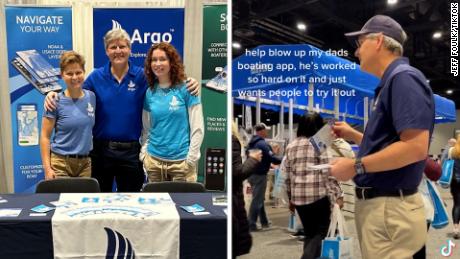Washington, DC (CNN Business)Uber presented a grandiose vision of flying vehicles whisking people around cities at its annual flying car conference Tuesday in Washington, DC, a day after a fatal helicopter crash raised safety questions about plans for increased air traffic over cities.
The ride-hailing company's entry into air transportation will begin July 9 with a helicopter service from Manhattan to JFK Airport. Uber expects that customers will save an hour of travel time by buying a roughly $200 ticket on the eight-minute flight, which will operate during the afternoon rush hour. One day, years in the future, Uber (UBER) expects car owners will choose to travel on autonomous, electric flying vehicles instead of cars because of what it predicts will be lower prices.
But before it gets to flying cars, Uber will join the helicopter industry in addressing a fresh set of safety questions. A helicopter crashed on the roof of a Manhattan building Monday, killing the pilot. The National Transportation Safety Board is investigating the crash. The fatality came weeks after a helicopter crash in the Hudson River off Manhattan; there were no deaths in that incident.
"For us, it underscores the need to make safety the absolute bedrock of everything we do," said Eric Allison, Uber's head of Elevate, its flying car program, told CNN Business. He said Uber chose to partner with Heliflite, a New Jersey helicopter charter company, because of what he said was a strong safety record.
The crashes come at an inopportune time for Uber. New York Mayor Bill de Blasio questioned Monday the role the Federal Aviation Administration is playing in regulating heliports. And City Council Speaker Corey Johnson asked in a local television appearance if the flights Uber would be offering are necessary and safe.
Uber isn't the first company to operate a helicopter ride service in New York. Blade began offering continuous flights to JFK Airport, LaGuardia Airport and Newark Airport earlier this year. It had already charted flights to the airports for several years. The Hudson River crash last month was a helicopter that a Blade partner, Zip Aviation, operates. According to a Blade spokesman, no Blade passengers were on-board as the crash happened during a refueling mission.
Fatal helicopter crashes are down from the mid-1980s, when there were nearly twice as many fatal crashes than there have been in recent years. There have been 18 fatal crashes and 35 deaths in the first five months of 2019, a rate similar to the previous year, according to FAA data. That's one fatal crash for every 143,000 hours of flight.
Aviation is more heavily regulated than motor vehicles, where Uber's traditional business operates. Allison said he views building flying cars as easier than developing self-driving cars on the ground, because there's so much open space in the air. But the challenging part, Allison said, is how highly regulated aviation is.
Uber held its conference in Washington, DC to better connect with regulators. Speaking at the event, Transportation Secretary Elaine Chao stressed safety as an administration priority when it comes to flying vehicles.
"Safety is always number one. it is the foundation of everything that the department does," Chao said. "There are a lot of questions about these systems. What type of propulsion will be used? Where, how far and how fast will they fly? Will they be manned, remotely controlled or self-piloted?"
Acting FAA Administrator Dan Elwell also spoke at the event, and called for a methodical approach to safely integrating flying vehicles.
"These are truly some of the most exciting developments in aerospace since the Wright Brothers," he said. "[But] I put on my FAA regulatory hat and I got a whole new bucket of stuff to worry about. I see car-sized vehicles with multiple rotors hanging over dense urban populations."





















